ENIAC is one of the first, where von Neumann separated programming from hardware design:


IBM 7030 Stretch, the first commercial computer with a pipeline:

IBM / 360 - pioneer of the principle of "one architecture, many microarchitectures":


CDC 6600 - a supercomputer that invented out-of-order execution of instructions:

Cray-1 supercomputer with operations on vector registers (pairwise addition or multiplication elements of arrays of numbers):
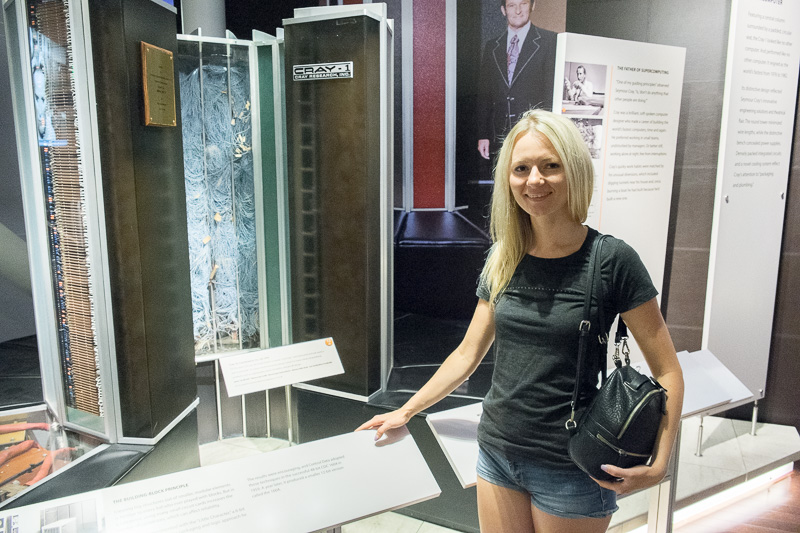
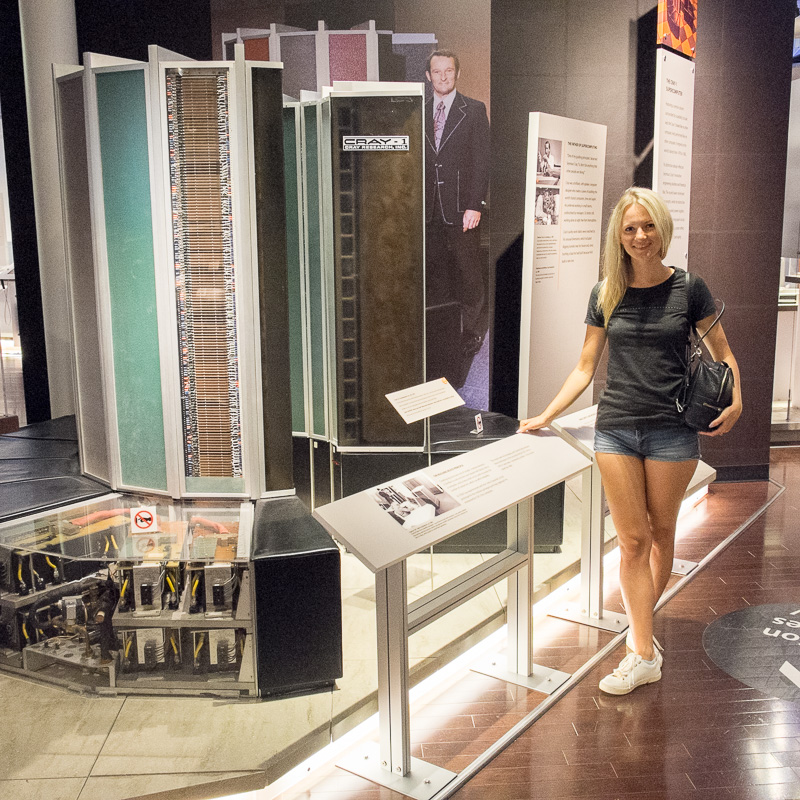
PDP-11 - a minicomputer with the ideology of CISC (Complex Instruction Set Computer), about the beauty of the command system of which programmers of the 1970s still sigh:

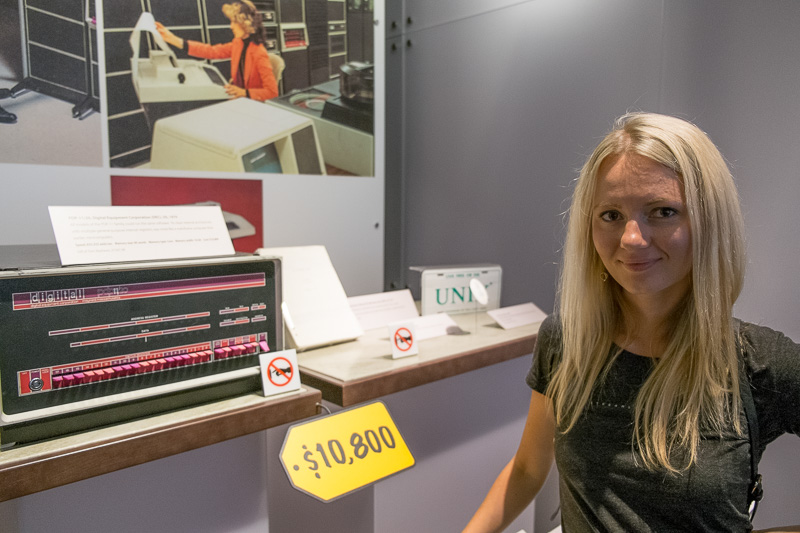
VAX-11 - the pinnacle of CISC ideology:
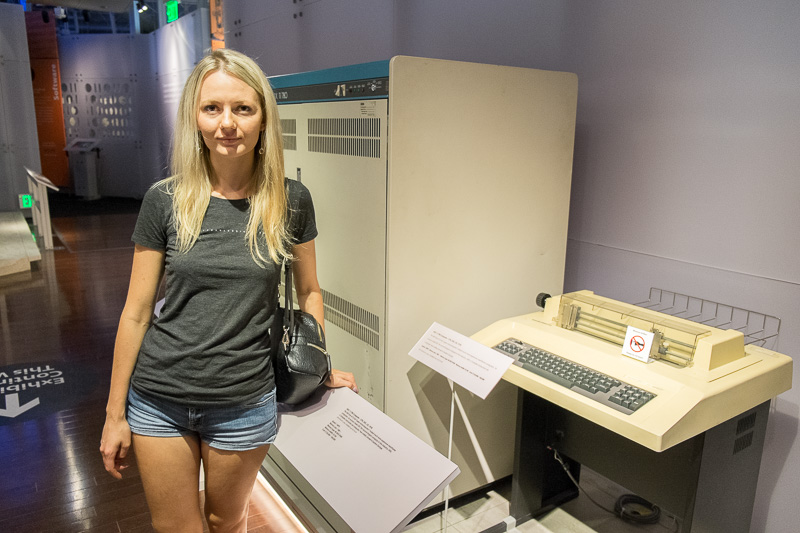
In the robot-dog to the left of Irina - MIPS processor, which embodies the ideology of RISC (Reduced Instruction Set Computer):

Silicon Graphics workstation with MIPS processor, used in Hollywood to create a type of "Jurassic Park" films:

These photos are not for video:

the Osborne Computer - the company lost when announced a new version haypovogo peresnosnogo computer and users stopped buying old:

Any old the PC, including homemade Soviet ones:

Early personal computers, including Apple II:
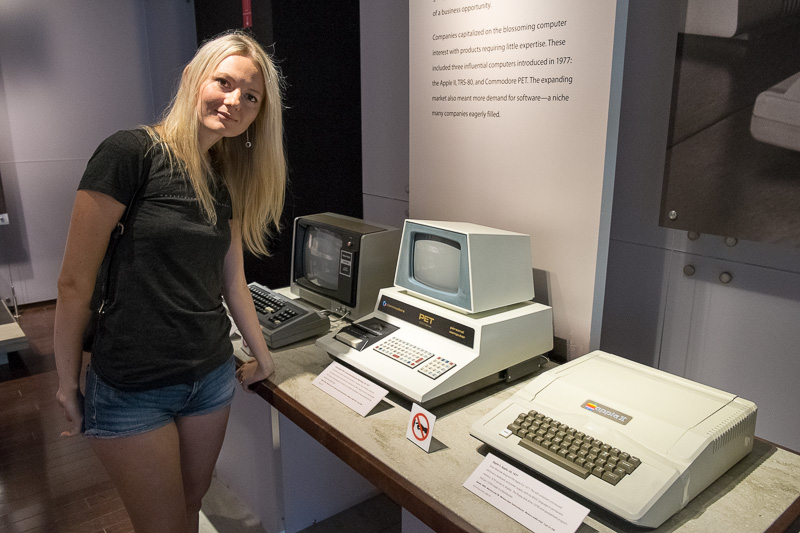
Altair 8800 - a homemade computer for which Bill Gates and Paul Allan made BASIC:
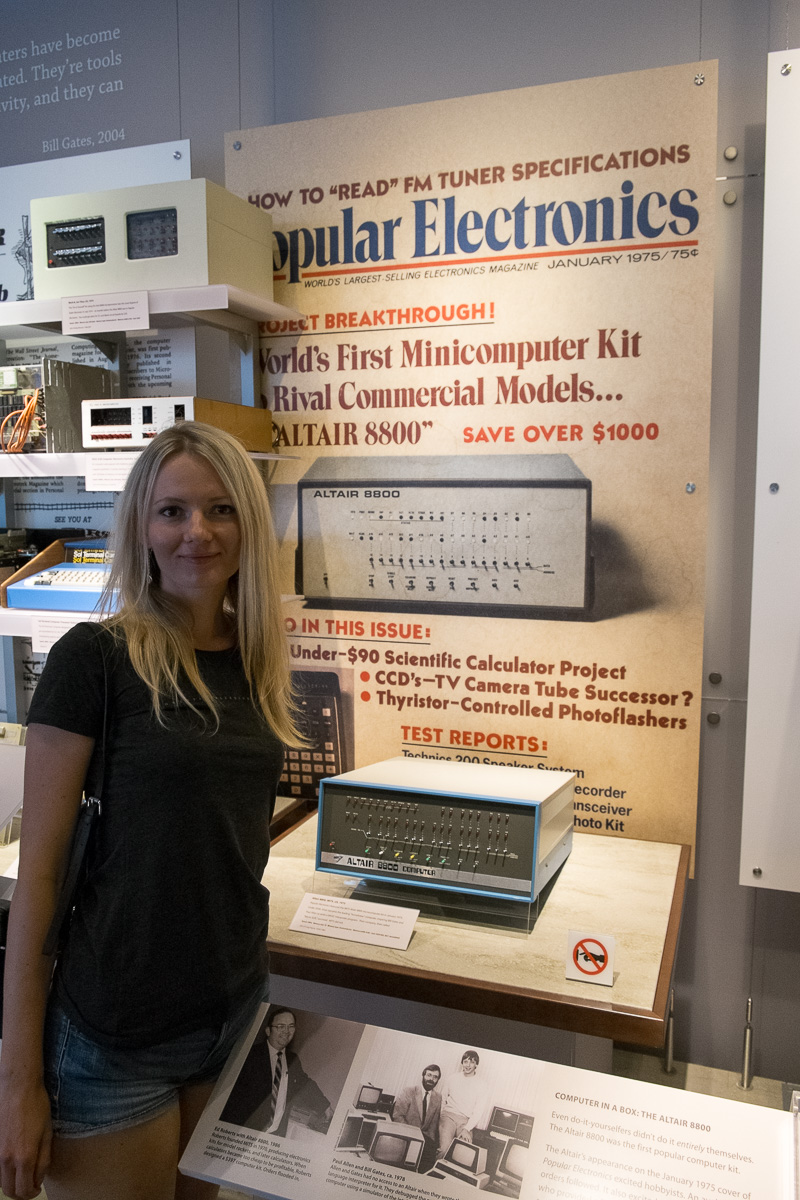
First Apple:

Early game consoles:


Appollo workstation with Unix:
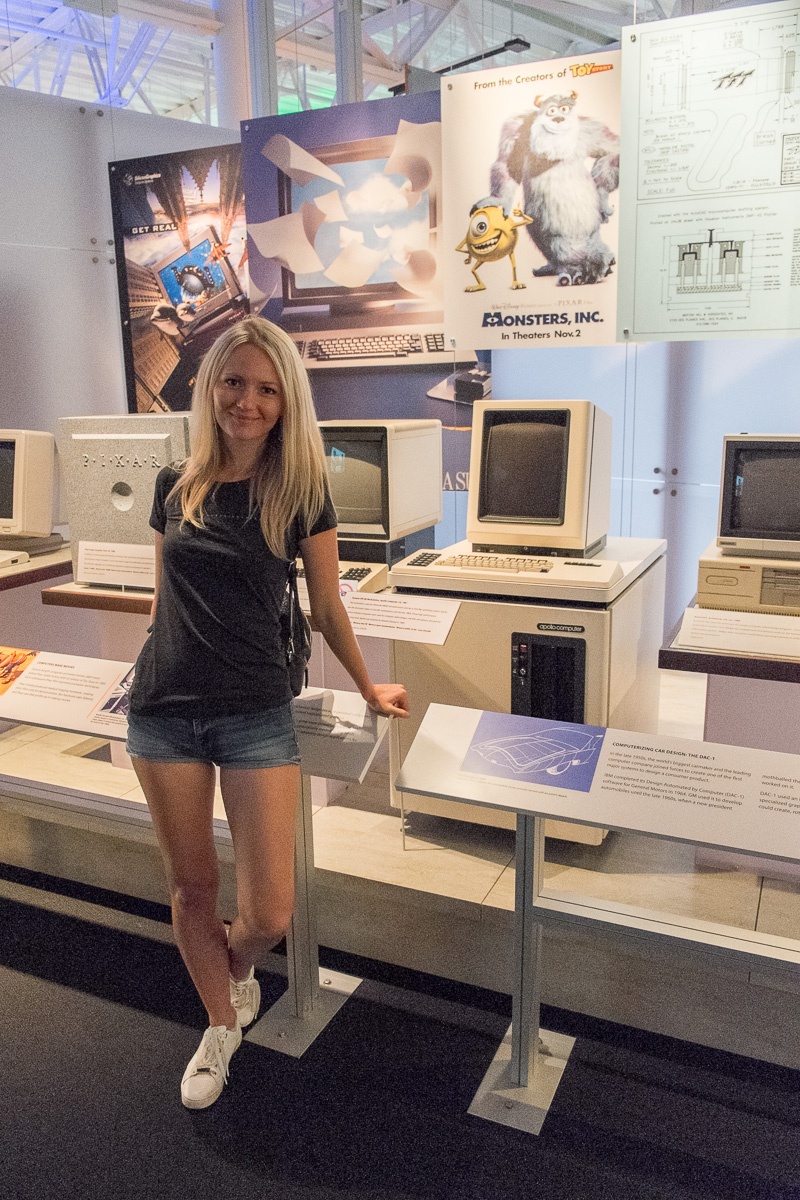

Antediluvian personal


computers : HP computer for observatories:


The first computer ever ordered by Newman-Marcus to sell it to women to store kitchen recipes. On punched tape:

A couple more minicomputers. It seems HP is the prototype of the Soviet SM-1 and CM-2 (not to be confused with the CM-3 and CM-4, which were copied from the PDP-11):

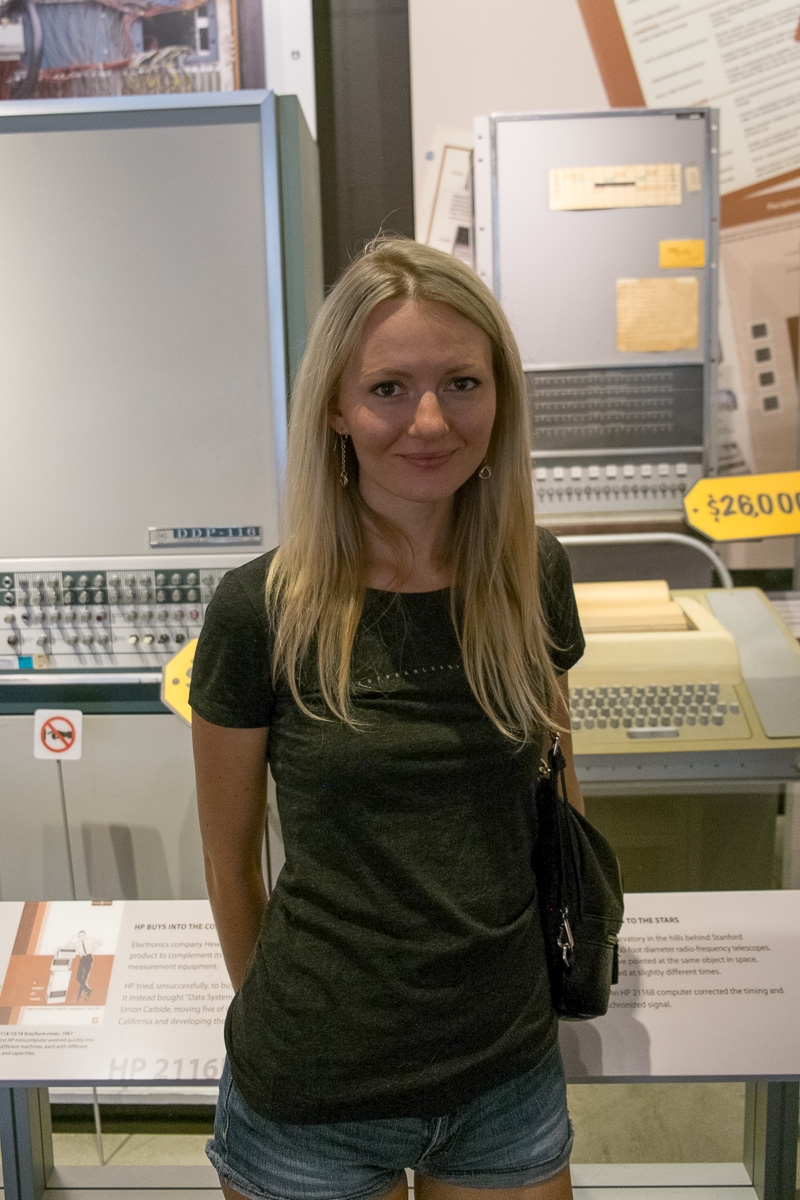
PDP-8. Ridiculous instruction set, but the low cost of the computer became popular for places like laboratories:


CDC 1604. Early computer of the great architect Seymour Kray when he was working at CDC:

Illiac IV is an experimental supercomputer that students wanted to smash in protest against the war in Vietnam:
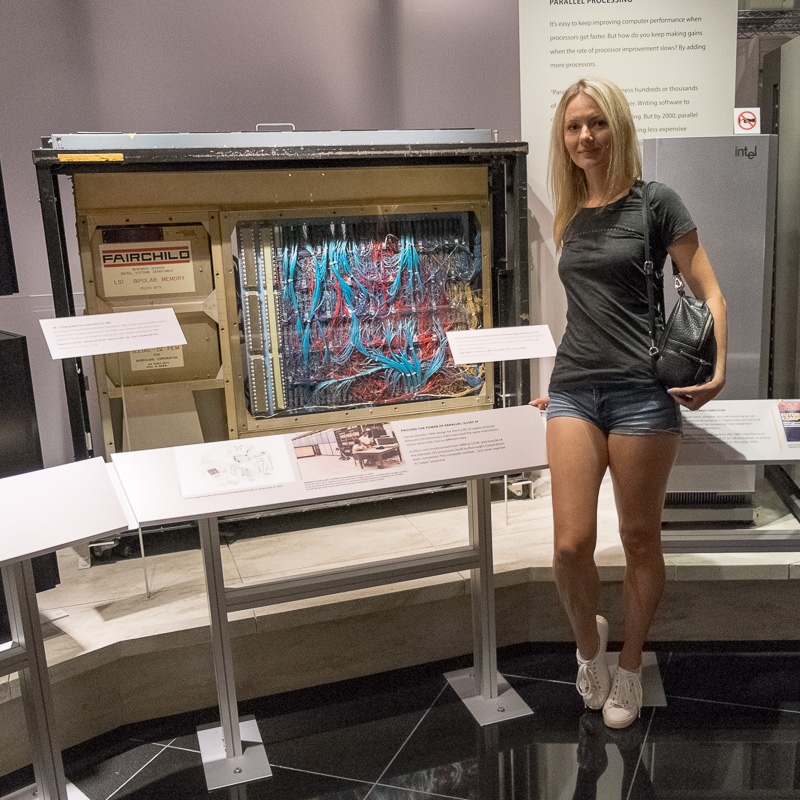
One of the Cray computers after Cray-1 (Cray X-MP? Cray-2?):

Some early mainframe (Univac?):

The first transistor computer in a ballistic missile?

On the wall is a Soviet on-board computer from the Mir station:

For wild money, they created a network of computers to track Russian bombers. Instead of bombers, the Russians began to make rockets and the network turned out to be unclaimed:


Whirlwind - memory on magnetic cores and other innovations:
